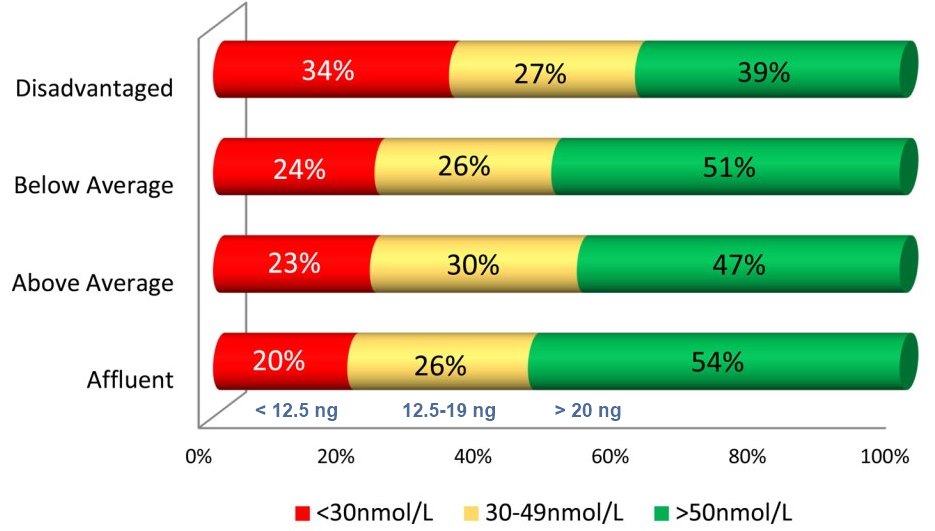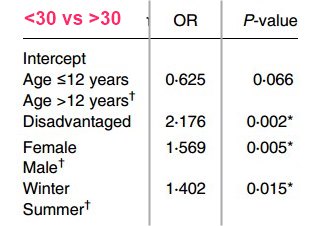Poor children were 2X more-likely to be vitamin D deficient (Ireland)
Low socioeconomic status predicts vitamin D status in a cross-section of Irish children
J Nutr Sci . 2022 Jul 25;11:e61. doi: 10.1017/jns.2022.57. eCollection 2022.
Helena Scully 1 2, Eamon Laird 2, Martin Healy 3, Vivion Crowley 3, James Bernard Walsh 1, Kevin McCarroll 1


Vitamin D is essential for bone and muscle health with adequate status in childhood crucial for normal skeletal development. We aimed to investigate vitamin D status in a convenience sample (n = 1226) of Irish children (aged 1-17 years) who had serum 25-hydroxyvitamin D (25(OH)D) tested by request of their GP at a Dublin Hospital between 2014 and 2020. We examined predictors including age, sex, season and socioeconomic status (SES). Vitamin D deficiency (<30 nmol/l) was prevalent affecting 23 % and was more common in disadvantaged areas (34 %) and in those aged >12 v. ≤12 years (24 % v. 16 %, P = 0⋅033). The greatest predictor was SES ( disadvantaged v. affluent, OR 2⋅18 , CI 1⋅34, 3⋅53, P = 0⋅002), followed by female sex (OR 1⋅57, CI 1⋅15, 2⋅14, P = 0⋅005) and winter season (October to February, OR 1⋅40, CI 1⋅07, 1⋅84, P = 0⋅015).
A quarter of our sample of children were deficient, rising to one-third in those in disadvantaged areas. Females and those aged over 12 years had a higher prevalence of deficiency. Public health strategies to improve vitamin D status in Irish children, including systematic food fortification may need to be considered to address this issue.
📄 Download the PDF from VitaminDWiki
Possible reasons: poor health (reason that the GP requested test), parents smoke, immigrants, consume more media (indoors), obesity
Both parents smoke – child’s vitamin D level was 30 percent lower and worse asthma – May 2018
Canadian immigrants have lower vitamin D levels and more chronic diseases – April 2022
Increasing time with indoor media, prescribe time outdoors - Sept 2013
Obesity is associated with low Vitamin D (and treated by D as well) – Aug 2019 has
{include}
